
Below is a small sample of new, out of print, rare and hard to find books about the
Chattanooga & Hamilton County,
Southeast Tennessee,
Northwest Georgia,
Northeast Alabama,
areas, and
Tennessee, Georgia & Alabama Landmarks
.
 The Chattanooga Country, 1540-1976, Tomahawks to TVA
The Chattanooga Country, 1540-1976, Tomahawks to TVA
Gilbert Govan and James Livingood
University of Tennessee Press, 1977.
Third (and last) Revised Edition of the popular history of the Chattanooga area by
UT Chattanooga head librarian Govan and longtime history professor Livingood. Makes a nice compliment volume to
Livingood's 1981 A History of Hamilton County, Tennessee.
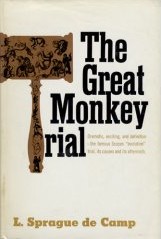 The Great Monkey Trial
The Great Monkey Trial
L. Sprague de Camp
Doubleday, 1968.
A very readable account
of the 1925 Scopes trial by reknowned science fiction
writer L. Sprague de Camp. The author, who visited Dayton, TN during his research
and talked to locals who remembered the events, debunks the myth that the townspeople were hostile to
Scopes. Long out of print and highly sought out, it's still one of
the best treatments of the trial in popular literature.
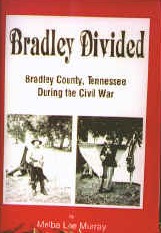 Bradley Divided
Bradley Divided
Melba Lee Murray
College Press, 1992.
Though located deep in the South, Bradley County, Tennessee was a hotbed
of Unionism, and sent more of its men to serve in U.S. ranks than Confederate. Drawning on various sources, including the infamous
"History of the Rebellion in Bradley County," by J.S. Hurlburt (see below),
Murray's work helps bust the
stereotype of a "Solid South" during the Civil War era.
NOTE: Cover photographs may not depict all editions for each title listed by dealers.
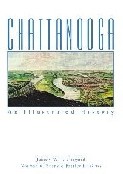 Chattanooga: An Illustrated History
Chattanooga: An Illustrated History
James Weston Livingood, Norman O. Burns and Patrice B. Glass
American Historical Press, 2001.
(Original edition by Livingood: Windsor Publications, 1980.)
General texual history and vintage photography available
in one source.
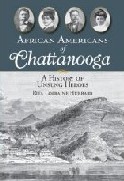 African Americans of Chattanooga: A History of Unsung Heroes
African Americans of Chattanooga: A History of Unsung Heroes
Rita L. Hubbard
The History Press , 2007.
Chronicles the ways African Americans have shaped Chattanooga, and presents inspirational
achievements that have gone largely unheralded over the years. Examples include little know
facts, such as that Chattanooga was the hometown of the first African American
appointed to lead counsel on a Supreme Court case.
 Baseball in Chattanooga
Baseball in Chattanooga
David Jenkins
Arcadia Publishing , 2006.
One of two recently published books covering the history of professional baseball
in Chattanooga from 1885, including the current Lookouts franchise and predecessor teams.
Emphasis in this book is on vintage photographs.
 Chattanooga Lookouts & 100 Seasons of Scenic City Baseball
Chattanooga Lookouts & 100 Seasons of Scenic City Baseball
Stephen Martini
Dry Ice Publishing , 2006.
One of two recently published books covering the history of professional baseball
in Chattanooga from 1885, including the current Lookouts franchise and predecessor teams.
Emphasis in this book is on textual history.
 Chattanooga
Chattanooga
Chattanooga African American Museum
Arcadia Publishing, 2006.
A pictorial history celebrating Chattanooga's African-American community and its vibrant
contributions to the city's cultural, political, business, and educational history.
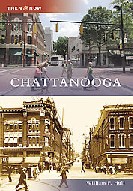 Chattanooga (Then & Now: Tennessee)
Chattanooga (Then & Now: Tennessee)
Rob Clifton
Arcadia Publishing, 2008.
Part of the Arcadia "Then & Now" local history series, this book features many
high quality photographs comparing historic and contemporary views of
city scenes & landmarks. Like all Arcadia publications, the emphasis is on quality
photography rather than lengthy textual material.
 Chattanooga Then and Now
Chattanooga Then and Now
Rob Clifton
Rob Clifton, 2006.
Rob Clifton's original self-published book of comparative photography between
historic shots of Chattanooga landmarks and neighborhoods juxapositioned against
contemporary perspectives of the same locations.
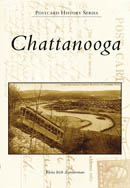 Chattanooga, TN: Postcards
Chattanooga, TN: Postcards
Elena Irish Zimmerman
Arcadia Publishing, 1998.
In this volume of carefully selected postcards that were printed in the first half
of the twentieth century, author and postcard collector Elena Irish Zimmerman
highlights some of Chattanooga’s most memorable historic treasures, including numerous
local businesses, homes, parks, and
memorials, as well as famed Lookout and Signal Mountains.
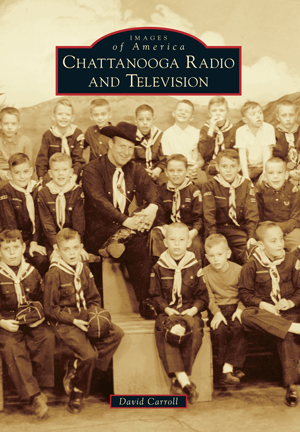 Chattanooga Radio and Television
Chattanooga Radio and Television
David Carroll
Arcadia Publishing, 2011.
Miss Marcia, Bob Brandy, Mort Lloyd, Dr. Shock, Harry Thornton, and, of course, "Luther."
These are among the icons of Chattanooga broadcasting. They are the faces and
voices that awakened Chattanoogans each morning, delivered the news, hosted exhibition sporting events, and made their listeners
and viewers laugh.
Chattanooga news anchor David Carroll has written what to date is the definitive one
volumn history of the "golden age" of local broadcasting in the "Dynamo of Dixie."
 Contempt of Court: The Turn Of-The-Century Lynching That Launched 100 Years of Federalism
Contempt of Court: The Turn Of-The-Century Lynching That Launched 100 Years of Federalism
Mark Curran, Leroy Phillips
Faber & Faber, 1999. (Hardcover); Anchor Books, 2001 (Softcover).
Powerful story of the infamous lynching of Ed Johnson from the Walnut Street Bridge in 1906,
and the subsequent trial of the Hamilton County Sheriff in the
United States Supreme Court for contempt. The court had issued a stay of Johnson's
execution pending review of his case by the court, and ultimately held the Sheriff
conspired to violate the court's order by facilitating the lynching.
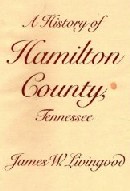 A History of Hamilton County, Tennessee
A History of Hamilton County, Tennessee
James Livingood
Memphis State Univ Press, 1981.
Author Livingood was a history professor and administrator at the University of Chattanooga (later
UT Chattanooga) from 1937 until 1975. Straighforward, prosaic, and written to scholarly academic sourcing
standards, even though it's out of print, this work remains the standard introductory reference for
Hamilton County's history. Not to be confused with Dr. Livingood's much shorter
county history written for the Tennessee County History Series, also published by
Memphis State University Press.
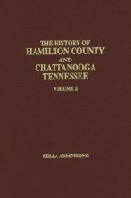 History of Hamilton County & Chattanooga, Tennessee
History of Hamilton County & Chattanooga, Tennessee
Zella Armstrong
Overmountain Press, Johnson City, TN, U.S.A., 1993 (Reprint);
Lookout Publishing, 1931.
Originally published in 1931, this is a classic "gentleman pioneers and leading citizens" "mug book" style history,
and makes an interesting contrast to the Livingood books.
Two volumes.
Each dealer may sell seperately, or as a set.
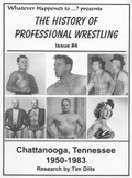 History of Professional Wrestling in Chattanooga, 1950-1983
History of Professional Wrestling in Chattanooga, 1950-1983
Crowbar Press.
This issue in the "History of Professional Wrestling" series brings back the
golden age of the "sport" when colorful local promotors such as Nick Gulas and Harry
Thornton entertained the masses with legendary tumblers like the Fargo Brothers
and Tojo Yamamoto. No history of the city is complete without the information contained
in this slim volume. Available directly from
Crowbar Press
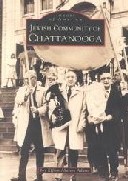 Jewish Community of Chattanooga (Images of America)
Jewish Community of Chattanooga (Images of America)
Joy Effron; Abelson Adams
Arcadia Publishing, 1999.
The Jewish Community in Chattanooga has been one of the most
influential groups in the city. One man, Adolph Ochs, took a small local newspaper,
the Chattanooga Times and changed the city. He later purchased the New York Times and
built a publishing empire that remains today.
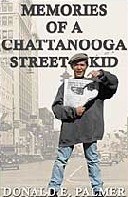 Memories of a Chattanooga Street Kid
Memories of a Chattanooga Street Kid
Donald E. Palmer
Live Your Dream Enterprises, Inc., 2004.
Autobiographical memoir by a television producer of his childhood days growing up "on the streets"
of Chattanooga in the 1930s and 1940s. Topics like "Visiting Mama at the Hosiery Mill," and "Visiting Daddy at Silverdale [the county workhouse]," make this book an intimate glipse into the life of working class families in the
Chattanooga area that you won't
find in the standard area histories by Livingood and Armstrong.
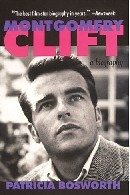 Montgomery Clift: A Biography
Montgomery Clift: A Biography
Patricia Bosworth
Originally published 1978, Reissued 2004.
Though raised in New York City, the acclaimed and tragic
"method era" actor's father was from Chattanooga, and descended from William Clift, pioneer coal mine magnate
of Soddy-Daisy, Clift spemt time in the area during the filming of Elia Kazan's landmark TVA movie, "Wild River," shot mainly in Bradley
and Meigs Counties. Book contains some detail of Clift's Hamilton County connections, and the "Wild River" filming.
 Railroads of Chattanooga
Railroads of Chattanooga
Alan A. Walker
Arcadia Publishing, 2003.
Pictoral history of railroad development in the Chattanooga area. Part of
Arcadia's
"Images of Rail" series.
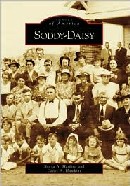 Soddy-Daisy (TN) (Images of America)
Soddy-Daisy (TN) (Images of America)
Sonya A. Haskins, Cathy A. Hawkins
Arcadia Publishing, 2006.
Like most "Images of America" books, this one is very photo intensive, containing
over 200 photographs, many never published before. Local authors also
provide a first rate short history of the community, including information
about early families, prominent homes, community events,
businesses, and landmarks.
 Torchlight to the Cherokees
Torchlight to the Cherokees
Robert Sparks Walker
MacMillan, 1931; Republished: Overmountain Press, 1993.
Pulitzer Prize nominated story of the Brainerd Mission in the Cherokee Nation.
Walker's East Brainerd birthplace and home is now the site of the Chattanooga Audubon Society.
The New York Times referred to the book as "an interesting and valuable addition
not only to the local history of Tennessee and Georgia, but also the history of the
American Indian and his relations with white civilization and government.
 And to Think it Only Cost a Nickel! The Development of Public Transportation in the Chattanooga Area
And to Think it Only Cost a Nickel! The Development of Public Transportation in the Chattanooga Area
David H. Steinberg
self published, 1975.
Unique monograph about the history of early public transportation in Chattanooga with special
emphasis on its once extensive trolley system, long since abandoned except for the "Incline," a lone remnant that
survived because of its potential as a tourist attraction.
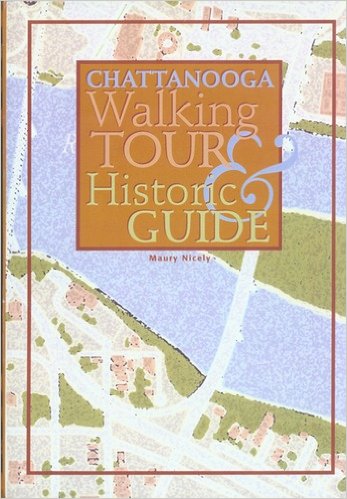 Chattanooga Walking Tour and Historic Guide (Spiral-bound)
Chattanooga Walking Tour and Historic Guide (Spiral-bound)
Maury Nicely
Stillhouse Hollow Press, 2002.
A must-have for any visitor to historic Chattanooga, Tennessee, or for the long-time
resident wishing to learn more about the history, architecture, and development of the
city. This 200-page guidebook is divided into 16 walking tours of the downtown area, and
also contains over 100 color and black-and-white photographs of historic sites
artifacts, as well as current places to go and things to do. If you are planning a
trip to Chattanooga, if you are a current resident, or if you are just interested
in the history of the city, Chattanooga Walking Tour and Historic Guide is an
indispensable resource.
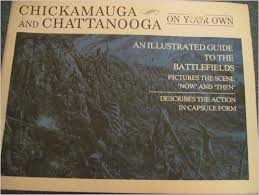 Chickamauga and Chattanooga on Your Own: An Illustrated Guide to the Battlefields
Chickamauga and Chattanooga on Your Own: An Illustrated Guide to the Battlefields
John J. Hollister
Battlefield Guide Publishers, 1977.
An illustrated guide to the battlefields with pictures of the scene 'now' & 'then'
which describes the action in capsule form. This picture gude to the
battlefields of Chickamauga and Chattanooga is designed to enable the visitor to tour
the battlefields on his own. Pictures are used to portray the action with limited reliance on maps,
and the stories of both battles are told in capsule form.
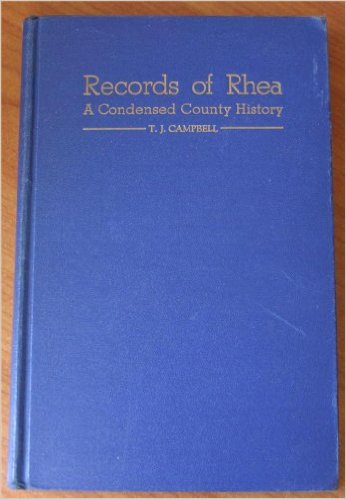 Records of Rhea, a Condensed County History
Records of Rhea, a Condensed County History
T. J. Campbell
Rhea Publishing Company, 1940.
Rare out of print book with valuable information about Rhea County, Tennessee's unique history.
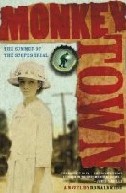 Monkey Town: The Summer of the Scopes Trial
Monkey Town: The Summer of the Scopes Trial
Ronald Kidd
Simon & Schuster, 2006.
Kidd novelizes the 1925 Scopes "Monkey Trial," re-creating it through the
eyes of 15-year-old Frances Robinson. It is her father, Dayton's leading businessman, who
helps instigate the trial to bring publicity to the depressed town. Frances' crush on 24 year old
John Scopes, a popular coach and teacher at the high school who is convinced by her father
to help with the plan, propels the action.
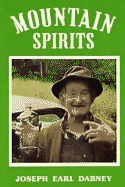 Mountain Spirits
A Chronicle of Corn Whiskey from King James' Ulster Plantation to America's Appalachians and the Moonshine Life
Mountain Spirits
A Chronicle of Corn Whiskey from King James' Ulster Plantation to America's Appalachians and the Moonshine Life
Joseph Earl Dabney
Charles Scribner's Sons, 1974; Reissued 1980 (Copple House Books), and 1984 (Bright Mountain Books).
The classic study of whiskey making and blockade running
in the Southern Appalachian and Cumberland Mountains. Notable for its profile and interview
with legendary Monteagle moonshiner, Hamper McBee.
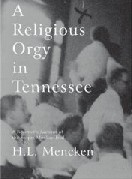 A Religious Orgy in Tennessee: A Reporter's Account of the Scopes Monkey Trial
A Religious Orgy in Tennessee: A Reporter's Account of the Scopes Monkey Trial
Henry Louis Mencken
Melville House Publishing, 2006 (softcover).
The business leaders of Dayton may have naively engineered the Scopes Trial to generate publicity for the economically depressed town,
but they should have heeded the
warning, "be careful what you wish for," because when cynical
gadfly Mencken showed up, any hope of positive press was lost. Compare to Matthew Champman's,
"Trials of the Monkey." (below)
 Trials of the Monkey: An Accidental Memoir
Trials of the Monkey: An Accidental Memoir
Matthew Chapman
University of North Carolina Press , 1992 (hardcover), 1996 (softcover).
Brillant, funny, outrageous at times, always fascinating story of an alcoholic descendant
of Charles Darwin who journeys to Dayton, TN by bus (he lost his driver's license because of a DUI) on a
quioxtic quest of self discovery, and to see the annual Scopes Trial reenactment (which he misses by a week).
Important for its sensitive and sympathetic protrayal of Dayton and its people
by a man who started out wanting to view the town as a stereotype.
 The World's Most Famous Court Trial: Tennessee Evolution Case
The World's Most Famous Court Trial: Tennessee Evolution Case
Bryan College, 1990, Lawbook Exchange, Ltd., 1997, various publishers.
Billed as "a Complete Stenographic Report of the Famous Court Test of the Tennessee
Anti-evolution Act, At Dayton, July 10 to 21, 1925,
Including Speeches and Arguments of Attorneys." Not a fascimile reproduction of the official trial transcript, this volume is a reprint of a version of the transcript
originally published, along with additional materials, by the National Book Company in 1925. It has
been the key primary document of the Scopes "Monkey" Trial used by historians, playwrights, movie screenwriters, etc.
Bradley County (Tennessee County History Series)
Roy G. Lillard
Memphis State University Press. 1980.
Concise topical county history written by longtime county historian Lillard.
The Tennessee County History Series was designed to produce brief, no-nonsense
general histories for each county written by local authorities and suitable for use
as a textbook in state or local history studies in secondary schools. These books
represent an alternative to the "subscription" format traditionally much more common in
county history books. The History Series books are probably of less interest to
genealogists because they do not contain detailed family data.
The History of Bradley County, Tennessee
Roy G. Lillard (ed)
East Tennessee Historical Society. 1976.
Topical county history edited by longtime county historian Lillard.
Probably the best general history of the county.
Not a "Heritage" or "mug" format.
History of the Rebellion in Bradley County, East Tennessee
J. S. Hurlburt, John W. Cook (ed)
Sink-Moore Publishing, Inc. 1988, (Limited edition, 1000 copies)
Originally published in 1866, this controversial book written by a staunch Unionist enraged pro-Confederate citizens of Bradley County, TN
because it depicted, in often gruesome detail, Rebel guerilla activities against Union sympathizers in the county, who were considerable.
Rare, unique, and highly sought after, both as a historical source and collector's item. High quality hardcover, facscilime reprint of the
original book, with brief introduction and added index.
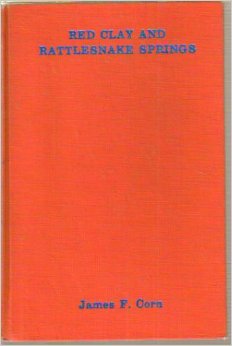 Red Clay and Rattlesnake Springs, a History of the Cherokee Indians of Bradley County, Tennessee
Red Clay and Rattlesnake Springs, a History of the Cherokee Indians of Bradley County, Tennessee
James Franklin Corn
1959. 1st Ed, 1961, Walsworth Publishing Co, Cleveland, TN, 1979, 1984.
History of the Red Clay area of southwestern Bradley County, and its Native
American heritage by a local Cleveland attorney and antiquarian.
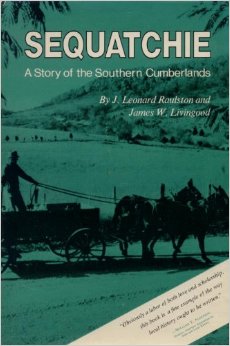 Sequatchie: A Story of the Southern Cumberlands
Sequatchie: A Story of the Southern Cumberlands
J. Leonard Raulston, James Weston Livingood
University of Tennessee Press, 1974, 1980.
Grassroots history of the Sequatchie Valley region, an area of singular beauty
in the Southern Cumberlands that has played host to a succession of pioneer peoples.
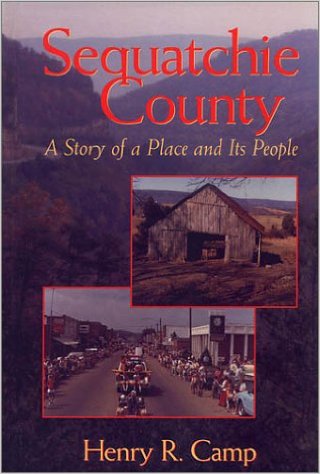 Sequatchie County
Sequatchie County
Henry R. Camp
Memphis State University Press, 1984.
Basic general topical county history.
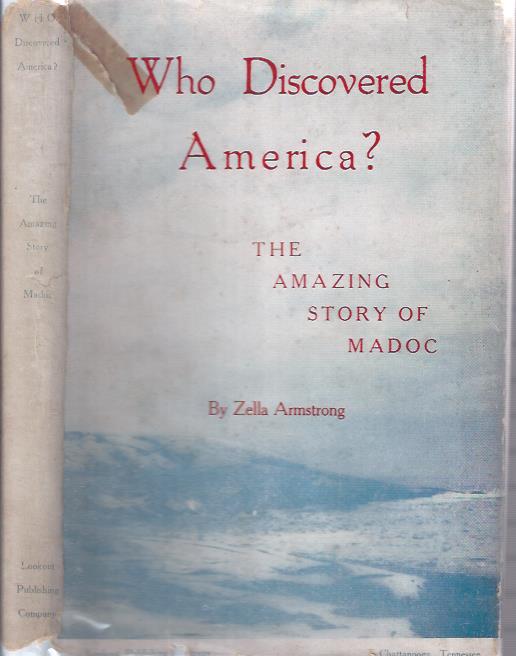 Who Discovered America? The Amazing Story of Madoc
Who Discovered America? The Amazing Story of Madoc
Zella Armstrong
Lookout Publishing Company, 1950.
Chattanooga antiquarian Armstrong published this unique book through her
own printing company in Chattanooga. Notable because it details the discovery and early debate about
the infamous "Chatata Wall" of supposed hieroglyphics (later determined
to be of natural origin) in Bradley County, along with the "Fort Mountain"
structure located in Murray County, GA. Includes drawings of the Chatata "inscriptions."
 A Brief History of Catoosa County (GA): Up into the Hills
A Brief History of Catoosa County (GA): Up into the Hills
Jeff O'Bryant
The History Press, 2009
Join local historian Jeff O'Bryant as he brings Catoosa County, Georgia's history and
valuable heritage to light. Mr. O'Bryant has been a political columnist
and staff writer for the Catoosa County News since 2003.
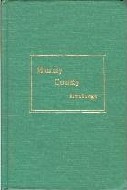 Murray County Heritage
Murray County Heritage
Murray County History Committee
W.H. Wolfe, Roswell, GA, 1988.
Detailed local history. Many illustrations. Family sketches and photographs from
many contributors. Good example of a modern
county "subscription" history. The
"Heritage" books common today contain genealogical submissions about local families by
persons who are also targeted buyers of the books. Submissions are not limited
to prominent or wealthy families, nor do they always require a prepurchase,
but they still do not uusally contain scholarly source citations for genealogical data.
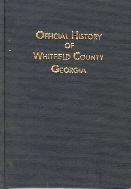 Official History of Whitfield County, Georgia
Official History of Whitfield County, Georgia
Whitfield County History Commission
A. J. Showalter, 1936. Reprints: Whitfield-Murray Historical Society, 1976 and 1981.
A classic, well written local history that transcends the typical "leading
citizen profile" focus common in county histories published during this period. Contains much information
about Dalton and Whitfield County's role in the Civil War.
Also important for the details it provides about the county at the
time of its publication in 1936.
 Carpet Capital: The Rise of a New South Industry
Carpet Capital: The Rise of a New South Industry
Randall L. Patton and David B. Parker
University of Georgia Press , 1999 (hardcover), 2003 (softcover).
Scholarly study of the rise of post World War II carpet
industry in Dalton, GA. Carpet transformed Dalton, where chenille had been a
cottage, then mom and pop manufacturing industry, into a textile powerhouse with
its fortunes tied to legendary names like Shaheen and Shaw. The boom eventually resulted in dramatic demographic shifts. Instead of outsourcing production,
the industry "insources" immigrant labor, much like New England textile did in the
19th and early 20th centuries.
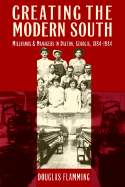 Creating the Modern South: Millhands and Managers in Dalton, Georgia, 1884-1984
Creating the Modern South: Millhands and Managers in Dalton, Georgia, 1884-1984
Douglas Flamming
University of North Carolina Press , 1992 (hardcover), 1996 (softcover).
First rate, scholarly history of the Crown Cotton Mill in
Dalton Georgia. More than just a standard corporate history, it serves as a socio-cultural
history of the mill community of employees, and a study of textile "paternalism" gone
awry.
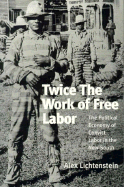 Twice the Work of Free Labor: The Political Economy of Convict Labor in the New South
Twice the Work of Free Labor: The Political Economy of Convict Labor in the New South
Alex Lichtenstein
Verso , 1995.
Scholarly study of the infamous Georgia convict lease system used from to by that state to
administer its prisoners. Contains some details about the Dade County
Coal Company and its prison (including photographs) at Cole City in Dade County, Georgia.
Look Upon The Hills
Walter Scott Bogle
Vantage Press, 1973.
In the tradition of Will Harben and other local color writers of the late 19th
and early 20th century, Dalton, GA resident Bogle wrote a novel depicting the
beginnings and rise of the Chenille industry (forerunner of carpet manufacturing)
in the Dalton area. (The late Bogle left a number of unpublished manuscripts with
the Whitfield-Murray Historical Society, including one portraying the now largely forgotten
Whitfield County Bohannon train robbers, whose 1897 Dalton trial was
a nationwide press event.)
 Lay Down With Dogs: The Story of Hugh Otis Bynum and the Scottsboro First Monday Bombing
Lay Down With Dogs: The Story of Hugh Otis Bynum and the Scottsboro First Monday Bombing
Byron Woodfin
University of Alabama Press, 1997 (hardcover), 2003 (paperback).
The Scottboro Boys trials were not the only famous ones in this town's history. When
Bynum, a large landowner and pioneer descendant whom the author depicts as a Faulkneresque "Big Daddy" bully,
is accused of trying to kill a local attorney he had a grudge against,
the place blows up (literally and figuratively) like it hadn't since the events of '31.
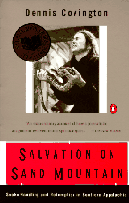 Salvation on Sand Mountain: Snake-Handling and Redemption in Southern Appalachia
Salvation on Sand Mountain: Snake-Handling and Redemption in Southern Appalachia
Dennis Covington
Hardcover: Addison-Wesley Publishing Company, 1994; Paperback: Penguin, 1996
Sent to cover the Summerford snake handling murder trial in Scottsboro, Alabama,
New York Times reporter Covington himself becomes enmeshed in the world of snake
handling, discovers his own families' association with it, and eventually take up
serpents himself. A fascinating literary psychodrama with historical overtones.
Highly recommended.
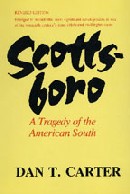 Scottsboro: A Tragedy of the American South
Scottsboro: A Tragedy of the American South
Dan T. Carter
Louisana State University Press, Oxford University Press (several editions).
The classic history of the infamous Scottsboro Boys case. Winner of the 1970 Bancroft Prize
for American historical writing and numerous other awards, the book
inspired the notable and somewhat controversial 1976 TV movie "Judge Horton and the Scottsboro Boys."
 History of Jackson County Alabama
History of Jackson County Alabama
John Robert Kennamer, Sr.
Jackson County Historical Association, Scottsboro, Alabama, 1993. (Reprint);
Southern Printing & Publishing, 1935 (Original)
Standard local history of the county.
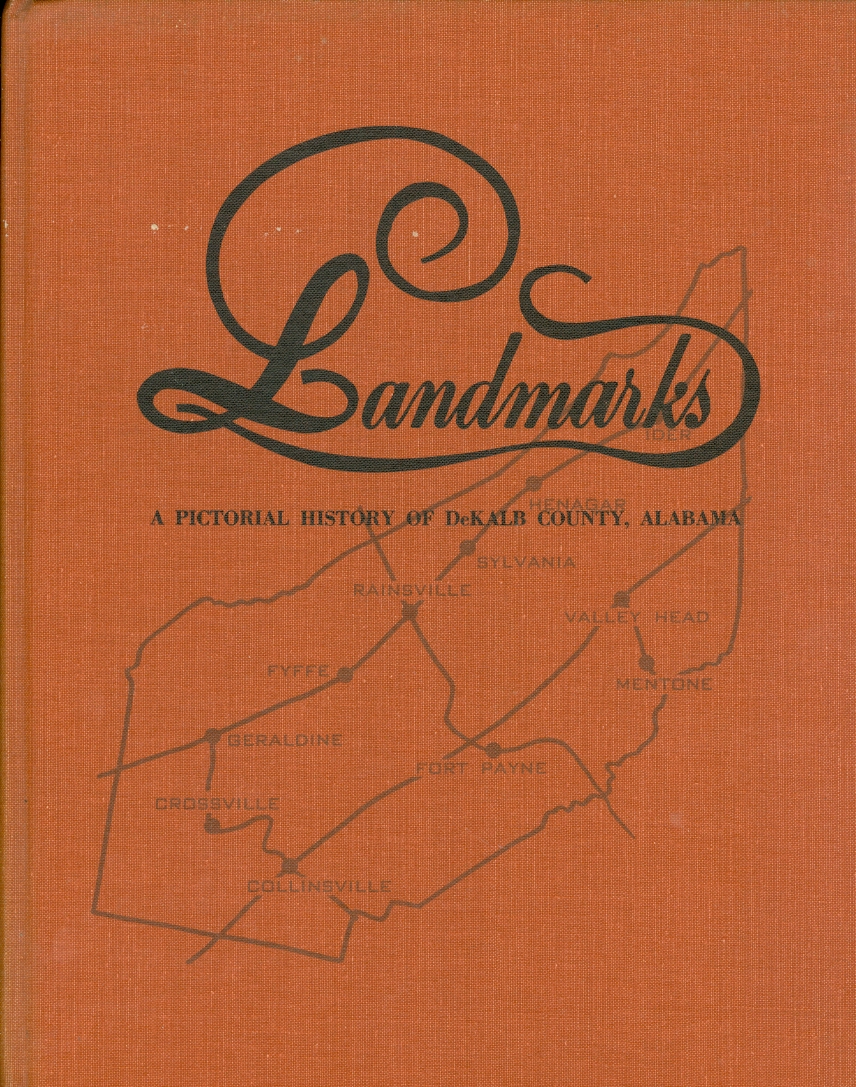 Landmarks A Pictorial History of DeKalb County Alabama
Landmarks A Pictorial History of DeKalb County Alabama
Landmarks of Dekalb County, Inc. Historical Committee
College Press, Collegedale, TN, 1993.
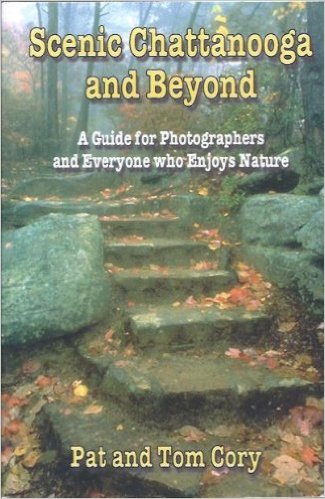 Scenic Chattanooga and Beyond: A Guide for Photographers and Everyone who Enjoys Nature
Scenic Chattanooga and Beyond: A Guide for Photographers and Everyone who Enjoys Nature
Tom and Pat Cory
Marmot Valley Publishing, 1999.
Writter by Chattanooga area photography workshop legends Tom and Pat Cory, this book is a guide to the photogenic
natural features found in and around the Chattanooga area.
It covers parks and natural areas within a 75 mile radius of Chattanooga.
The book includes reference material about the natural features, information about hiking trails
including directions on how to find them.
Also included is information about how to successfully photograph wildlife,
landscapes, waterfalls, fall color, etc. An easy-to-use reference for photographers, and for the person who would
like to know more about the natural areas, and how to find them.
 Caves of Chattanooga
Caves of Chattanooga
Larry E. Matthews
National Speleological Society, 2007.
Book explores use and commercial development of nine Chattanooga-area caves.
Learn about Native American use,
saltpeter mining during the War
of 1812 and Civil War; and how Nickajack Cave was once the most visited cave until flooded by TVA. Read
never-before-published stories of fascinating discoveries deep inside
Lookout Mountain, and about the Great Cave Hoax of 1927.
 Caves of Tennessee
Caves of Tennessee
Thomas C. Barr, Jr.
Tennessee Division of Geology, 1972 (Reprint of the 1961 edition).
This publication of the Tennessee Division of Geology catalogs 682 caves by county, with text descriptions and locations. There are 150 illustrations, either caves maps or photographs, and 58 pages of introductory text on geology and biology. Folded state cave-distribution map in back pocket.
Available directly from the National Speleological Society.
Shopping cart at the
National Speleological Society
website.
 Chattooga
Descending Into the Myth of Deliverance River
Chattooga
Descending Into the Myth of Deliverance River
John Lane
University of Georgia Press, 2005.
Like Twain's Mississippi, or Conrad's Congo, the Chattooga looms as one of the great
water metaphors of inner journey and self exploration. Book is a search for the "real" Chattooga:
something in between what lies between the banks and between the ears, an unforgiving
lure that will violate the body and pentrate the soul.
The journey includes interviews with locals who played parts in the movie.
(A bit of trivia: Actor Bill McKinney, whom Ned Beatty would probably agree is one of
film history's greatest villains, was born in Chattanooga, TN.)
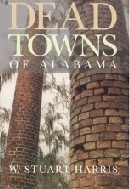 Dead Towns of Alabama
Dead Towns of Alabama
W. Stuart Harris
University of Alabama Press, 1977 with many editions and reprints.
A classic, and one the best books of its kind. Very detailed with the kind of
esoteric historical information demanded by local historians, genealogists, treasure
hunters, etc. A must if you are researching Alabama.
 Descriptions of Tennessee Caves
Descriptions of Tennessee Caves
Larry E. Matthews
Tennessee Division of Geology, 1971.
This update to Barr's 1961 classic contains information on 312 new caves, as well
as a few corrections or updated descriptions of caves in Barr. Includes illustrated
introductory sections on paleontology and saltpeter mining. Maps of many of the caves;
two foldouts. Updated state cave-distribution map in back pocket.
Available directly from the National Speleological Society.
(
Shopping cart
), and from:
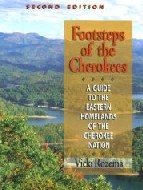 Footsteps of the Cherokees: A Guide to the Eastern Homelands of the Cherokee Nation
Footsteps of the Cherokees: A Guide to the Eastern Homelands of the Cherokee Nation
Vicki Rozema
John F. Blair Publisher, 1995 (Reprint, 2007).
A photographic travel guide to Cherokee sites and history. Well written, good information
and photos.
 Georgia Place Names
Georgia Place Names
Kenneth Krakow
Winship Press, 1975, 1994, 1999.
Information on names of counties, towns, rivers and creeks, post offices. militia
districts, etc.
 Last Train to Elkmont
Last Train to Elkmont
Vic Weals
Silver Maple Press, 1996.
Story of the development and history of the Elkmont logging camp and
resort community, later incorporated into the Great Smoky Mountain National Park.
Elkmont contained many National Register historic structures, including the grand Wonderland Hotel.
Due to National Park Service indifference, the structures were deliberately
allowed to fall into ruin in what is one the greatest historic preservation
travesties of the 20th century.
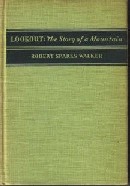 Lookout: The Story of a Mountain
Lookout: The Story of a Mountain
Robert Sparks Walker
Southern Publishers, 1941. (Reprint: George C. Hudson, 1952);
Though long out of print, this book is still an excellent
general history and description of the famous mountain
by an outstanding writer,
and of course it
contains "contemporary" details about long vanished landmarks
like the Lookout Mountain Hotel (now part of Covenant College).
Includes much information about the Native Americans, whose name for it, transliterated,
was "Chatanuga."
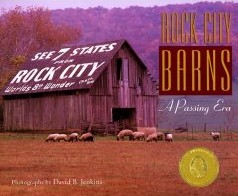 Rock City Barns: A Passing Era
Rock City Barns: A Passing Era
David B. Jenkins
Silver Maple Press, 1996.
Gorgeous coffee table book that is a celebration of both regional history and outdoor
advertising art. Rock City Barns provides an excellent visual catalog of hundreds of
barns which sported the Rock City ad. Writer and photographer Jenkins spent thirty years capturing these
vanishing relics on film: over 500 sites in 15 states are showcased in a fine, unique
photographic essay.
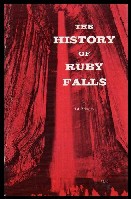 Ruby Falls, History of
Ruby Falls, History of
Ed Brinkley
Private Printing, 1980, 1983.
Illustrated with black and white photographs. The Chapters are: The Tour; Evangeline;
The Mighty Cherokee - A Vanquished American; A City Is Born - A Mountain Looks Down;
Discovery of Ruby Falls; Personnel and Operations; Geology of Lookout Mountain Caverns
and Ruby Falls; Cave Humor; and Locale.
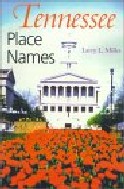 Tennessee Place Names
Tennessee Place Names
Larry Miller
Indiana University Press, 2001.
For the author's preface: "...designed as an aid in historical or geographical research, as
well as to satisfy the curiosity of general readers. Among
those who may find it of interest...are librarians ... members of
historical and genealogical societies...Purpose is to provide
the 'reasons' for naming Tennessee's hamlets, towns, and cities..."









